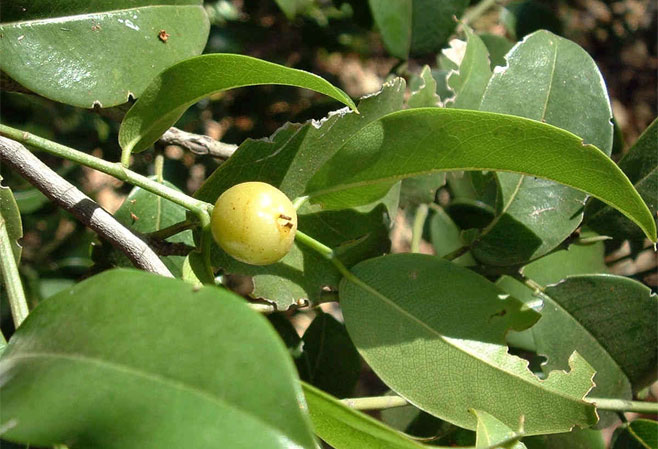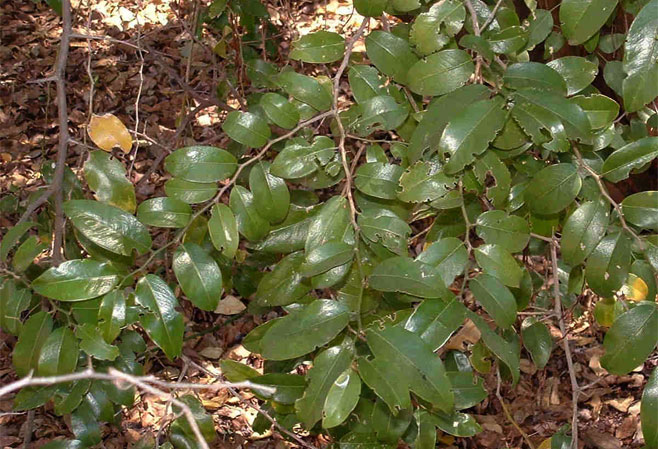Chaetacme aristata (Thorny elm)
[= Chaetachme aristata]
Basterwitpeer [Afrikaans]; umKovoti [Xhosa];
umKhovothi, umBambangwe ("it catches the leopard") [Zulu]; umBangabangwe [Swazi]; mula-nguluvhe
("wild pig fodder")
[Venda]
Life
> eukaryotes >
Archaeoplastida >
Chloroplastida
>
Charophyta > Streptophytina > Plantae (land plants)
> Tracheophyta (vascular plants) > Euphyllophyta > Lignophyta (woody plants)
> Spermatophyta (seed plants) > Angiospermae (flowering
plants) > Eudicotyledons > Core Eudicots > Rosids >
Eurosid I > Order: Rosales >
Family:
Ulmaceae
 |
 |
|
Chaetacme aristata, National Botanic
Garden, Harare, Zimbabwe. [photo Julian Spurway ©, Flora of Zimbabwe] |
Identification
- A shrub or small tree, growing to a height of 15 m,
generally with dense foliage and often coppicing from the base.
- Leaves are alternate and there are usually one or two
straight spines in the leaf axil. Branchlets zigzag between
leaf/spine nodes. Leaves are simple, more or less elliptical,
and have a characteristic hair-like bristle at their tips; leaf
margins can be smooth or sharply toothed.
- The bark is pale grey and the trunk is often fluted at the
base. The trunk often has spines or vestiges of sharp-tipped
branchlets with spines.
- Flowers are unisexual, in axillary cymes, greenish or cream,
blooming from late winter to early summer.
- Fruit is spherical, about 15 mm in diameter and pink, yellow
or orange in colour.
Distribution and habitat
Native to Africa south of the Sahara, and
Madagascar. Within southern Africa is is found in the Western Cape
(from Knysna eastwards), Eastern Cape, KwaZulu-Natal, Limpopo,
Mpumalanga, Northwest Province, Gauteng, Swaziland, Zimbabwe,
Mozambique and eastern edge of Botswana. Found in coastal and
riverine forest, in wooded kloofs and along bushveld streams.
Ecological interactions
- Fruit are eaten by:
- birds (according to Palmer & Pitman [1972], with the
exception of the following two species, birds are not
particularly fond of the fruit):
- Leaves are eaten by:
- The bark is eaten by:
Uses
Links
References
- Palgrave, K.C. and Palgrave, M.C. 2002. Trees of Southern Africa. 3rd
Edition. Struik Publishers, Cape Town.
- Palmer, E. and Pitman, N. 1972. Trees of Southern Africa covering all
known indigenous species in the Republic of South Africa, South-West Africa,
Botswana, Lesotho and Swaziland. Volume 1. A.A. Balkema, Cape
Town.
- van Wyk, B. and van Wyk, P. 1997. Field Guide to Trees of Southern
Africa. Struik Publishers, Cape Town.
Text by Hamish Robertson |
